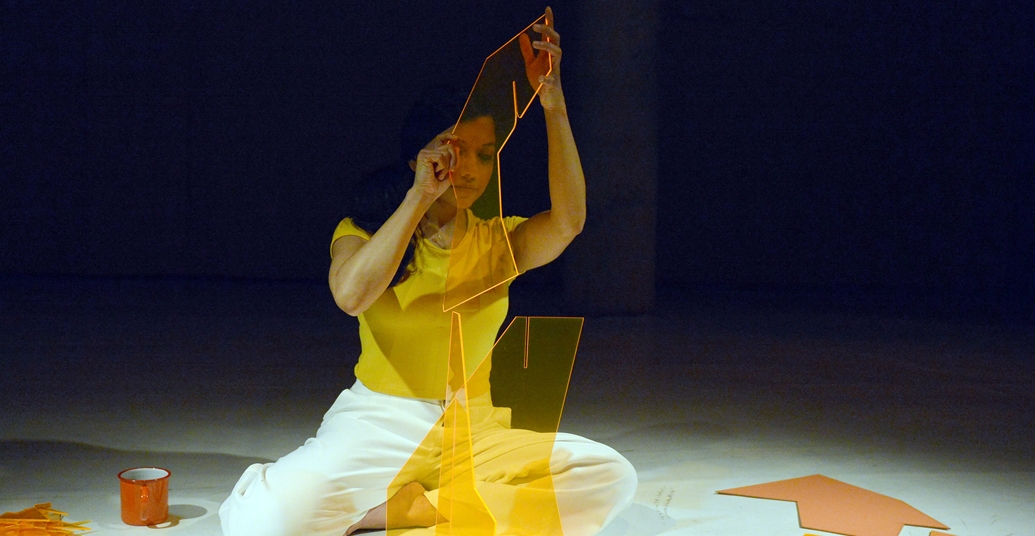Anjal Chande / The Soham Dance Project present “This is how I feel today”, a Bharatanatyam-rooted work charting the individual experience within its societal context.
As Anjal Chande enters the space, dressed in vibrant yellow, she contrasts strikingly with the large Grecian columns of the Sophiensaele’s Kantine. They loom over her, faded, cracked, and peeling. In a piece which touches upon issues of postcolonialism, it’s a powerful image.
Chande starts to sing, and, shuffling her feet, travels along the length of the front row, wringing her hands into knots around her face. As she looks us directly in the eye, her presence is compelling. Both voice and movement gradually morph into something more percussive, and Chande dances up a storm, slapping her feet rhythmically against the floor, hitting positions with extraordinary precision. However, this surge of movement, as with the others in the work, is fleeting.
In a corner lies a pile of angular, geometric shapes; fluorescent orange shards cut from acrylic and cardboard. During the course of the piece, Chande slots some of them together to form sunglasses, oversized jewellery, or a table. The rest are placed like stepping stones across the floor, giving the sense of a life being laid out chronologically in front of us. Like the dance phrases, these interludes are brief. The real meat of the work, it seems, is the text.
Chande sits and reveals autobiographical snippets from her life, in a chatty, confessional tone. She comments on race, economic inequality, and gentrification with admirable frankness. She does not shy away from baring anxieties over her own inaction and privilege. Both personally and politically, there seems to be an undercurrent of indecision and not-knowing. Is it a reaction to increasingly dogmatic dialogues around these topics? Or, in its desire to centre the personal experience, is “This is how I feel” today perhaps attempting to echo our indefinable, fluctuating nature?
As she flits through weighty, complicated themes at a quick pace, Chande alights briefly, rarely diving in deeper. Sifting through the torrent of words, I find some nuggets, but I wonder how many I have missed. The improvised movement, when it comes, is so exactingly expressive that I feel I am permitted a glimpse into Chande’s world. Paradoxically, the text detailing her experiences in a less abstract way leaves me far more unsure. It is so directly personal, so stripped back of artistic transformation, that I struggle to find any space left for interpretation. When a work is this autobiographical, I wonder what doors are left open for us to enter? Chande says that she is constantly exoticised in Berlin, and I ask myself if the emphasis placed on her personal story is a reaction to that – a conscious refusal to serve as a canvas for the audience’s projections.
Chande finishes the performance by questioning our value systems around art, saying that she “does not want this dance to be special”. She makes some interesting points; do artists have to be perceived as exceptional people? Does art have to be showy and bold? Not necessarily.




